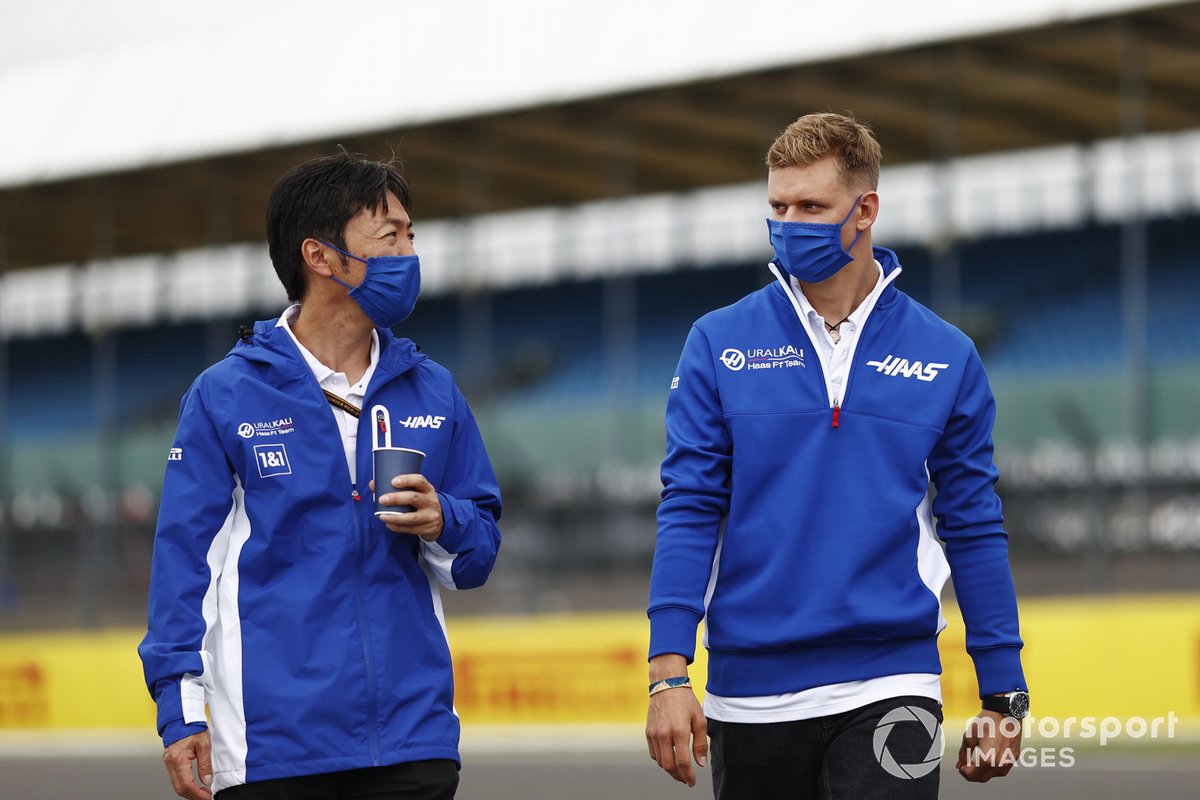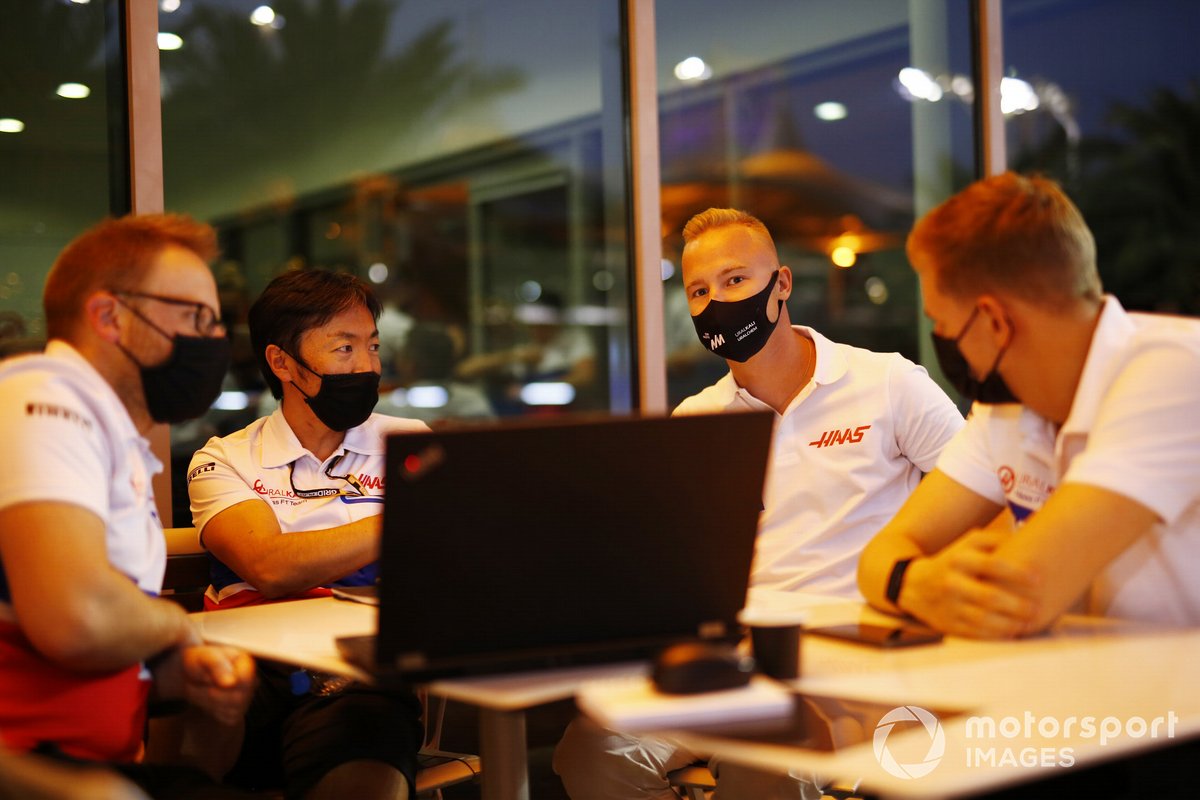Engineers are crucial to the success of a Formula 1 team, and whether they’re working on a car at a race weekend or optimising the car in the factory, there’s a wide variety of engineering roles out there.
To find out more about the world of F1 engineering, we spoke to Ayao Komatsu – Haas F1 Team’s Director of Engineering – to find out how he made it to where he is, what he looks for in potential hires, and what advice he’d give to people who want to become an engineer in Formula 1.
What is your role?
I am the Director of Engineering and I manage all trackside engineering activities on-site, and back in the factory working with a team of engineers – a vehicle performance group, vehicle science group and electrical engineering. I coordinate some of the performance related activities at the Banbury engineering group with the trackside engineering, but I also work closely with the planning operation department as well, so it’s quite wide ranging.
How do you become a Director of Engineering?
I started in Formula 1 in 2003. I was on the test team for BAR Honda which is now Mercedes and I focused on the vehicle performance side. I did that for three years and on the final year I focused on tyres and analysis of tyre performance. It was the era of Michelin and Bridgestone and that was the biggest performance differentiator, even more so than aerodynamics at the time. I got a call from Renault to join the team and moved in 2006 to do a similar role in terms of a Tyre Engineer when we won the championship. After that era of tyres ended, I wanted to go into more generic vehicle performance. I became a Performance Engineer, trackside. I did that for a year, and then went on to the race team, doing the same tasks, but as a race team Performance Engineer. I then became a Race Engineer on the team for four years, and then became Chief Race Engineer for a year. Overall, I was with Renault for just under 10 years.
Then I had the opportunity to come to Haas as a brand-new team. I thought it was a very exciting opportunity, rather than being purely a Race Engineer, and being part of a bigger project with a new team. It was an exciting prospect for me.

Mick Schumacher, Haas F1, and Komatsu Ayao, Haas Chief Race Engineer
Photo by: Andy Hone / Motorsport Images
What qualifications do you need?
I did an automotive engineering degree and then I went on to the PhD in the same area. Qualification wise, a good engineering degree is required and then a Master’s or PhD. It doesn’t need to be PhD, but at least a Bachelor’s is definitely a necessity and then a good Master’s helps as well. During it, you dive into one specific area rather than having a general overview of engineering.
What should you study in school?
I’d say maths and physics are the obvious ones, but then computing, software, programming and language are all good to study.
What other skills are useful?
I think you really need to have a human aspect because communication is key. There are many clever, academic people, but not all of them are good communicators and you need to be able to get the best out of the team. If you want to work in the management side of motorsport, you need to have good communication skills and really try to understand people. That’s something that’s not necessarily taught in school, but it is at least as equally important in my opinion.
How can I get work experience?
After being at university for two years, I did an industry placement. I worked at an engineering company called Lotus Engineering in Norfolk as part of my degree course. When I finished, I started working with my former boss in my spare time working on an amateur style British Formula 3 category using a car from years ago with a really small group of people. There were three guys and myself and you did everything – that was good, practical experience, that really complemented my studies as well.
It gave me a balanced experience which was important before coming to Formula 1 because once you join, everything is so big. It’s difficult to get exposure to various aspects of racing. Doing what I had done and having involvement in all aspects of the operation, from washing tyres, to doing the race strategy, understanding the performance and reliability, was really good experience and it gave me a good foundation for when I joined Formula 1. I’m happy that I didn’t go there straight out of university without that practical experience.

Nikita Mazepin, Haas F1, talks to Mick Schumacher, Haas F1 and Ayao Komatsu, Haas Chief Engineer
Photo by: Andy Hone / Motorsport Images
Do you get go to races?
Yes, I travel to all races.
How does your job differ when at the track compared to at the factory?
It’s very, very different because what we do at the track is more established because there are very different questions and objectives. Everyone’s role at one point in the weekend is very defined. The preparation to build the car, checking everything is set-up on the Friday as it’s the main test day. You make any improvements then as that’s your only chance. In FP3 you’re trying to get the best out of the car, focusing on the tyres and aerodynamics before qualifying, where you try your best over one lap. Then we talk strategy for Sunday and execute it in the race.
Back in the factory, I also do a lot outside of events. We have a big group of people writing software, writing the simulation, planning and working on a certain development. I have regular meetings – project meetings, planning meetings – in terms of defining the direction and operating on the priorities. There is lots of coordination with our team in Italy as well, as not only are they working on this year’s car, but next years as well which is our big project. There’s quite a lot going on!
What’s a standard day for you?
There is a structure, but you can’t plan everything. On a race weekend, it’s much more structured and rigid as you know exactly what you’re doing and it’s difficult to find a slot for anything extra. On factory days, most days are planned but there is more room to shift things around because we’re not dictated by session times. There are only so many hours in a day, so you need to be efficient and organised.
This article was created in partnership with Motorsport Jobs. Find the latest jobs in motorsport, as well as jobs with the Haas F1 Team, on the Motorsport Jobs website.

shares
comments
